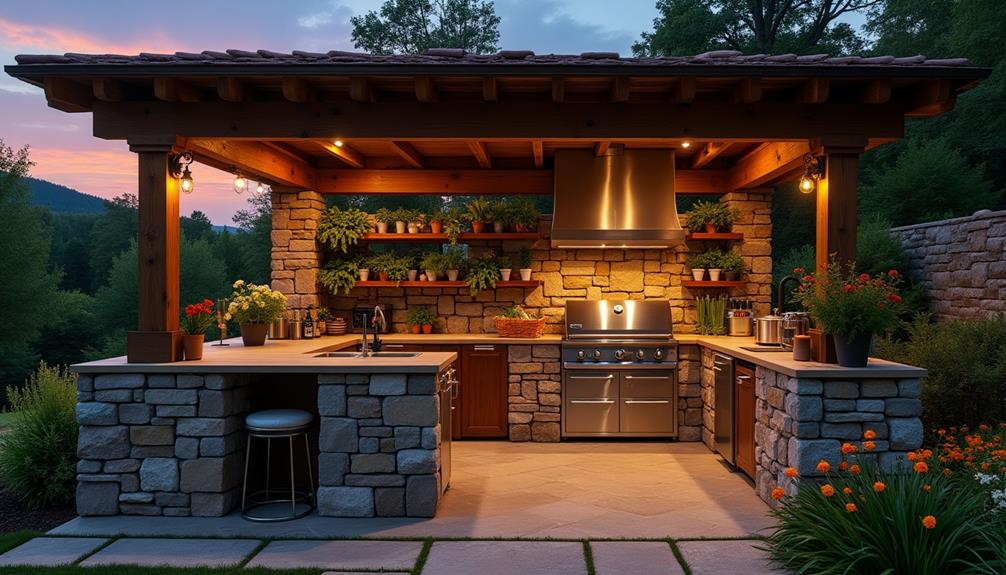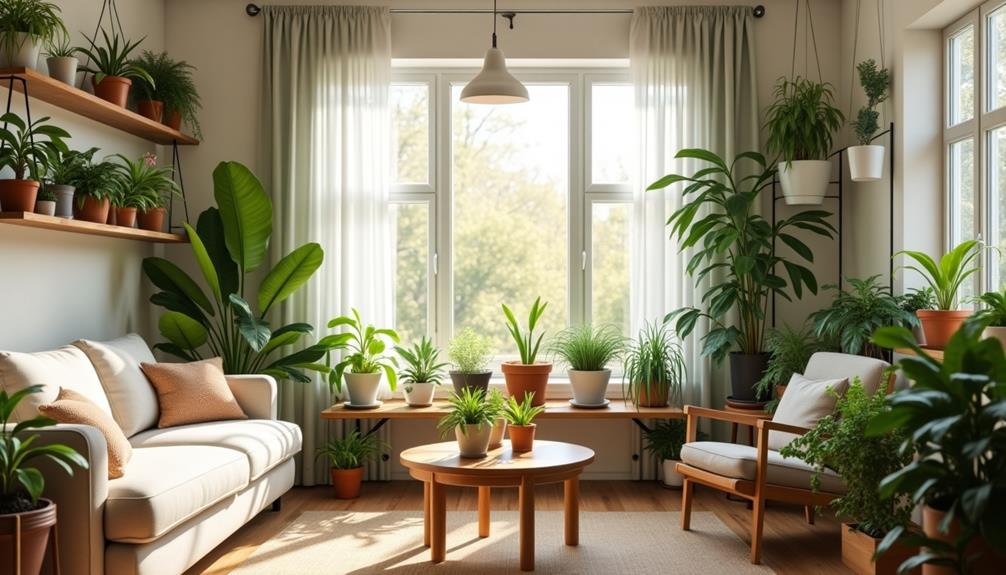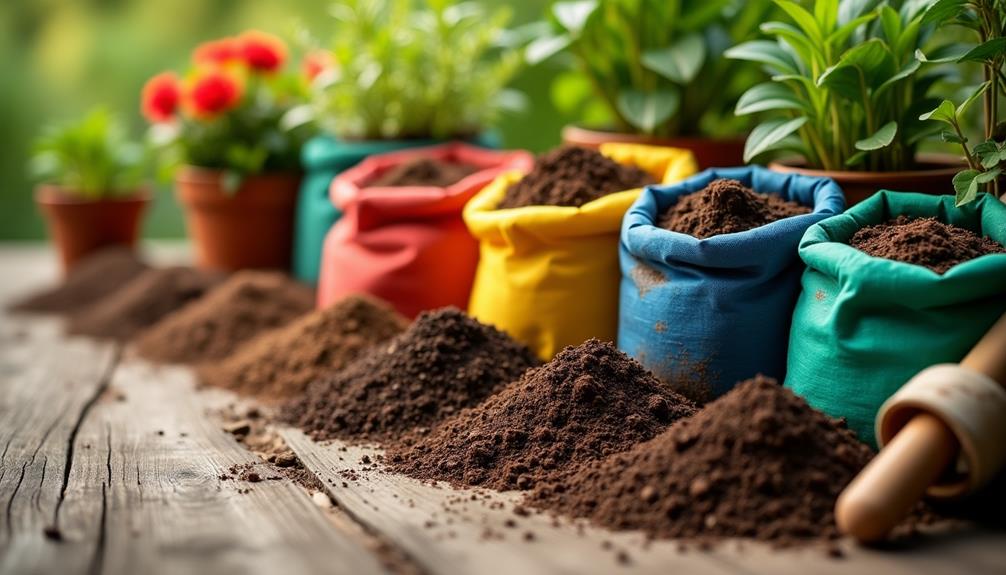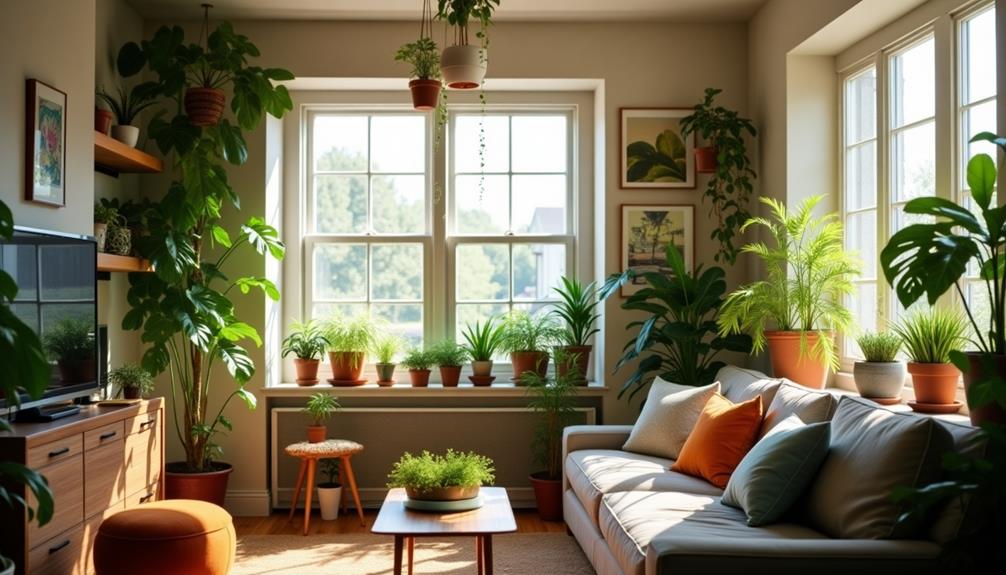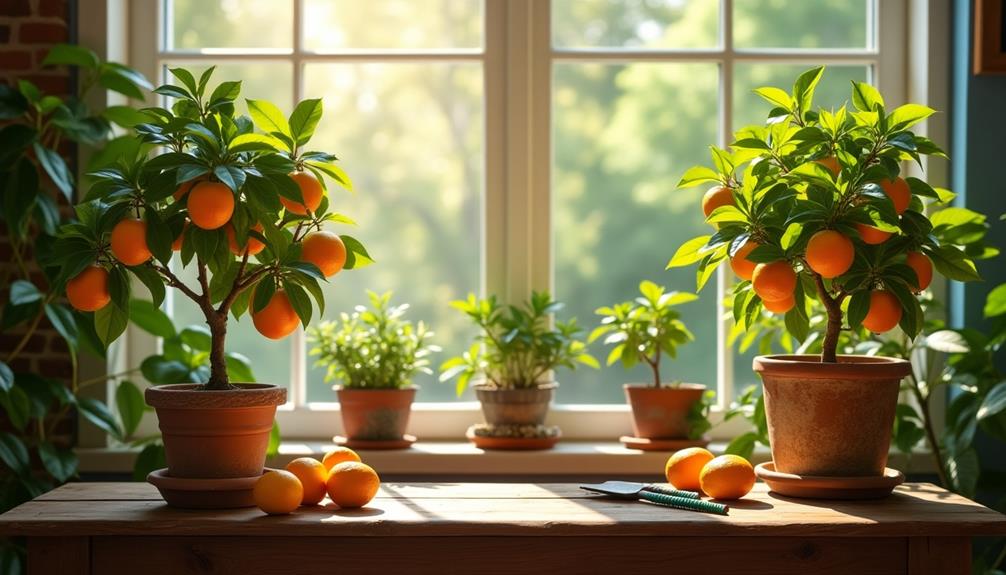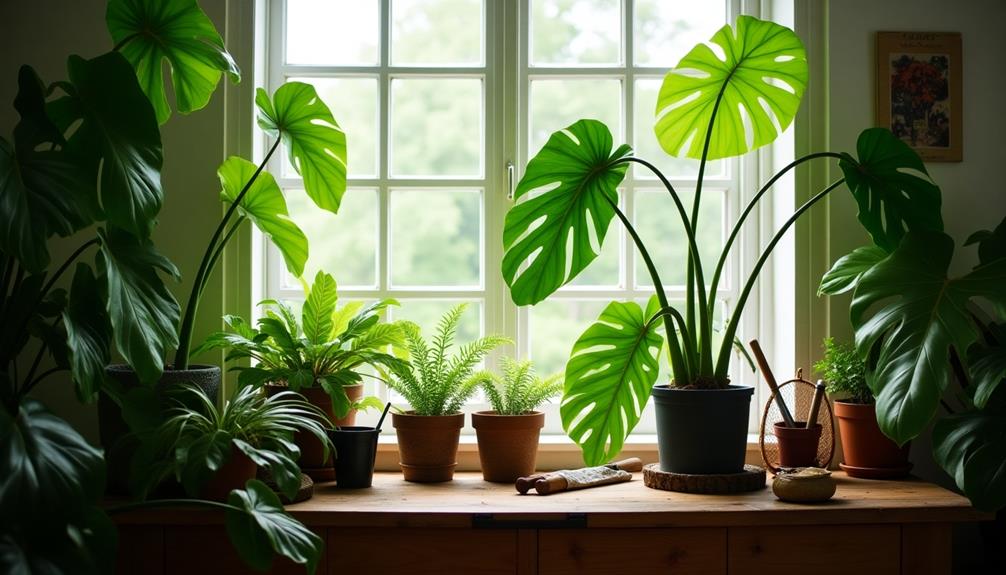When you start designing your DIY outdoor kitchen, the first step is to think about how you cook and entertain. You'll need to assess your space and decide on essential features like a grill, prep area, and storage solutions. Choosing the right materials is crucial for durability and style, but there's more to consider. Once you have a functional layout in mind, it's time to transform your outdoor space into a culinary haven that reflects your personality. What elements will truly make it stand out, and how can you ensure it meets your needs?
Planning Your Outdoor Layout
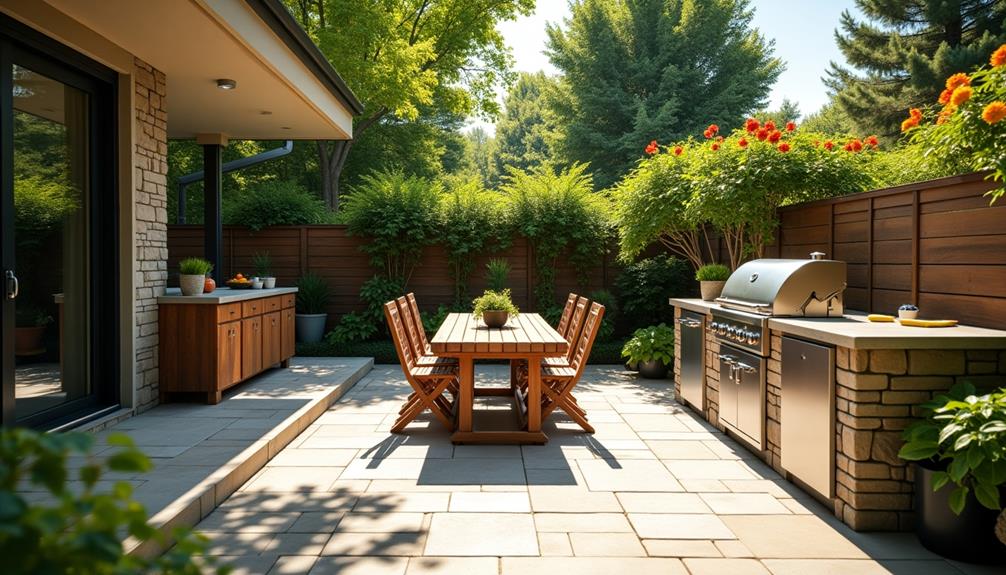
When planning your outdoor layout, it's essential to consider how often you'll use the space. If you envision hosting gatherings frequently, you'll want to prioritize an efficient outdoor flow that connects your cooking area with seating arrangements.
Think about how guests will move around the space. You don't want anyone bumping into a grill while carrying a plate of food!
Start by determining the focal point of your outdoor kitchen. Position the grill, prep area, and sink in a way that encourages easy movement.
Then, consider the seating arrangement. You might prefer a casual vibe with a fire pit surrounded by chairs or a more structured setup with a dining table nearby. Ensure there's enough room for people to move comfortably without crowding.
Don't forget about shade and shelter. Incorporating awnings or umbrellas can enhance your space's usability, making it more inviting for those hot summer days.
By carefully planning your outdoor layout, you'll create a cohesive area that promotes interaction and makes every meal outdoors enjoyable.
Ultimately, your design should reflect your lifestyle and invite relaxation and connection with friends and family.
Choosing Essential Appliances
After you've mapped out your outdoor layout, it's time to pick the right appliances that will enhance your cooking experience. Start with grill types; consider whether you prefer gas, charcoal, or electric. Each type offers distinct flavors and cooking styles, so choose one that fits your culinary needs. A gas grill is great for quick meals, while charcoal provides that classic smoky flavor for barbecue enthusiasts.
Next, think about additional cooking appliances like a pizza oven or a smoker, which can elevate your outdoor dining.
Don't forget about storage solutions; you'll need cabinets or shelving to keep your cooking tools organized and accessible. Opt for weather-resistant materials to ensure longevity, and consider incorporating a cooler or outdoor fridge for easy access to beverages and ingredients.
Lastly, evaluate your countertop space. A good prep area is vital for an efficient cooking workflow, so make sure it's ample enough to handle all your food prep tasks.
Selecting Durable Materials
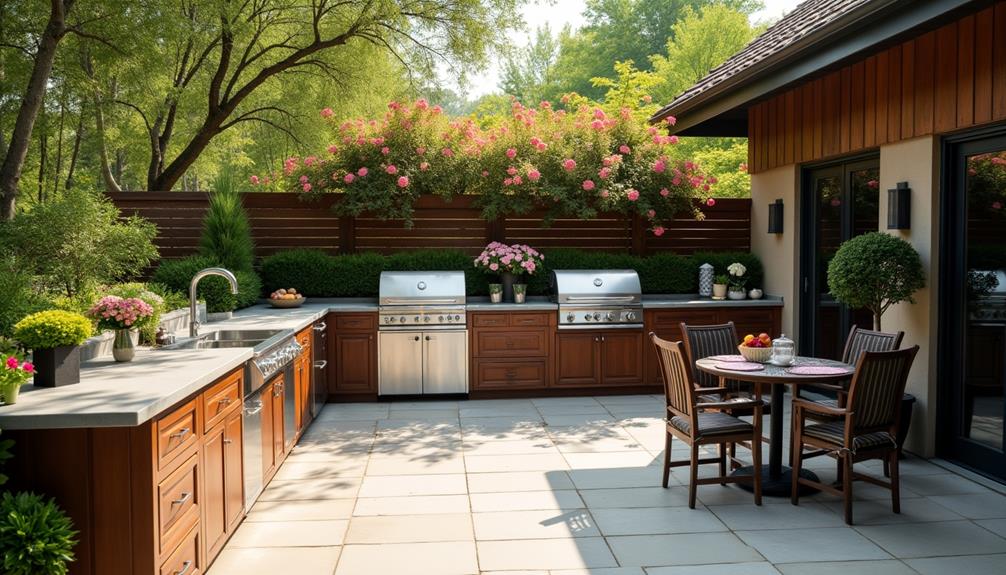
Choosing the right materials for your outdoor kitchen can make or break its longevity and appearance. You'll want to prioritize weather resistant options that can withstand the elements and maintain their beauty over time.
Look for materials like stainless steel for appliances and countertops, as it resists rust and corrosion. Natural stone, such as granite or quartz, is another excellent choice for surfaces, providing both durability and a stunning aesthetic.
When selecting cabinetry, consider marine-grade plywood or composite materials that are specifically designed for outdoor use. These options offer enhanced resistance to moisture and pests, ensuring your kitchen stays functional for years.
Don't overlook flooring either; using materials like porcelain tiles or stamped concrete can provide a sturdy surface that's easy to clean.
Maintenance considerations are crucial as well. Opt for materials that require minimal upkeep, so you can enjoy your outdoor kitchen without constant worry.
Regular sealing and cleaning can help extend the life of your chosen materials. By investing in the right durable materials, you'll create a beautiful and functional outdoor kitchen that enhances your outdoor living experience.
Designing Functional Workspaces
A well-designed workspace is essential for maximizing efficiency and enjoyment in your outdoor kitchen. Start by mapping out your cooking and prep areas to ensure everything flows smoothly.
Consider the classic work triangle—placing your grill, sink, and prep station in a triangular layout enhances workspace efficiency and keeps you moving with purpose.
When choosing surfaces, opt for materials that are easy to clean and withstand outdoor elements. An ergonomic design is crucial; your counters should be at a comfortable height to reduce strain while chopping, mixing, or grilling.
Don't forget about storage! Include cabinets and shelving within reach to keep utensils, spices, and tools organized and accessible.
For cooking zones, think about incorporating a dedicated prep area with a cutting board and ample counter space. If you're planning to entertain, add a bar or seating area nearby to create a social hub.
Adding Personal Touches
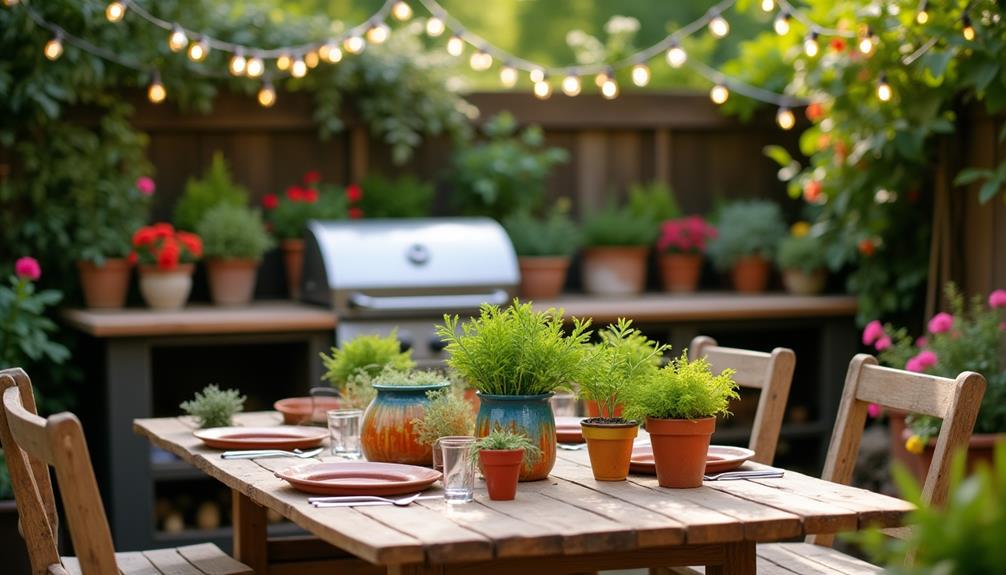
Personalizing your outdoor kitchen can transform it from a standard cooking space into a unique reflection of your style and taste. One great way to achieve this is by incorporating decorative accents that resonate with you.
Think about vibrant outdoor rugs, colorful dishware, or custom artwork that showcases your personality. These small details can elevate your kitchen's aesthetic and make it feel more inviting.
Next, consider adding unique lighting options. String lights, lanterns, or even LED strips can create a warm, welcoming atmosphere for evening gatherings.
Choose fixtures that match your overall theme, whether it's rustic, modern, or something in between.
Don't forget about functional accessories that can also serve as personal touches. A personalized cutting board, custom spice rack, or unique grilling tools can enhance your cooking experience while showcasing your flair.

